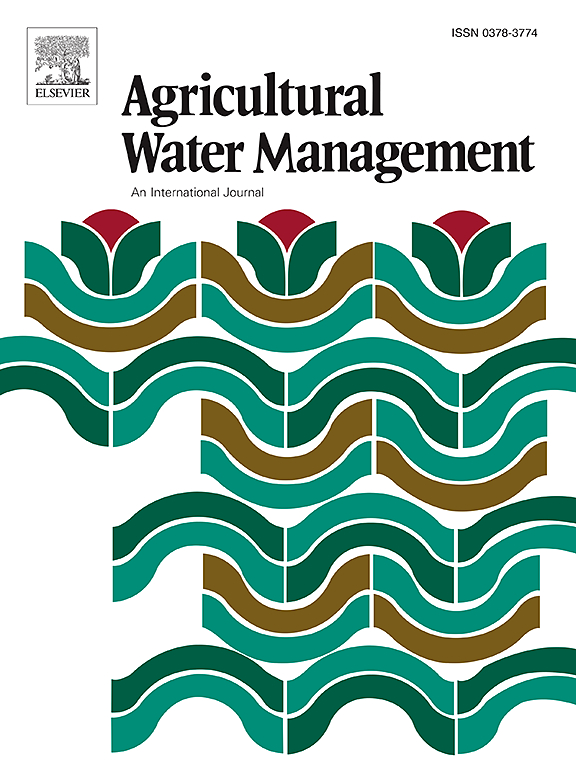An inclusive approach to crop soil moisture estimation: Leveraging satellite thermal infrared bands and vegetation indices on Google Earth engine
IF 5.9
1区 农林科学
Q1 AGRONOMY
引用次数: 0
Abstract
Soil moisture estimation is critical for environmental and agricultural sustainability, with its spatial and temporal variation playing a key role in drought monitoring and understanding climate change. The region of Prince Edward Island (PEI), Atlantic Canada's largest potato producer, is facing irregular precipitation patterns that stress crop water supplies. This study aims to estimate field-scale soil moisture utilizing satellite-based reflective and thermal infrared bands from Landsat-8 Operational Land Imager (OLI)/Thermal Infrared Sensor (TIRS) and Moderate-resolution Imaging Spectroradiometer (MODIS) over the cloud-based Google Earth Engine (GEE) platform. The GEE data catalog's pre-processed data endured to calculate various indicators for the agricultural seasons of 2021 and 2022 across three designated plots: A, B, and C. The indicators are land surface temperature (LST), normalized difference vegetation index (NDVI), normalized difference water index (NDWI), and normalized difference moisture index (NDMI). NDVI and LST were used to calculate the soil moisture index (SMI), representing the real-time soil moisture at the field scale. The soil moisture data was validated using in situ measurements. The analysis showed good Root Mean Square Error values of 1.43 % (Plot A), 2.12 % (Plot B), and 2.60 % (Plot C). A weak negative association between LST and NDVI was noticed in the study, with R² values of 0.25, 0.38 and 0.26 for Plots A, B and C, respectively. As the LST rises, vegetation declines due to the elevated temperatures in the study area. Second, a significant (p < 0.05) negative correlation (R2 =1) existed between SMI and LST in both the 2021 and 2022 seasons, showing a decrease in the top layer soil moisture with LST. The NDWI exhibited a significant inverse correlation with soil moisture, while NDMI and NDVI are effective predictors. Hence, based on the current study, optical and thermal remote sensing offers valuable insights into soil moisture dynamics and can be a good tool for irrigation control and water conservation.
作物土壤湿度估算的包容性方法:利用卫星热红外波段和谷歌地球引擎上的植被指数
土壤水分估算对环境和农业可持续性至关重要,其空间和时间变化在干旱监测和了解气候变化方面发挥着关键作用。爱德华王子岛(PEI)是加拿大大西洋地区最大的马铃薯生产地,该地区正面临着不规则的降水模式,给作物供水带来了压力。本研究旨在通过基于云的谷歌地球引擎(GEE)平台,利用Landsat-8业务陆地成像仪(OLI)/热红外传感器(TIRS)和中分辨率成像分光仪(MODIS)的卫星反射和热红外波段估算田间土壤湿度。经 GEE 数据目录预处理的数据用于计算 2021 年和 2022 年农季三个指定地块的各项指标:指标包括地表温度(LST)、归一化差异植被指数(NDVI)、归一化差异水分指数(NDWI)和归一化差异湿度指数(NDMI)。NDVI 和 LST 用于计算土壤水分指数 (SMI),代表田间尺度的实时土壤水分。土壤水分数据通过现场测量进行了验证。分析结果显示,均方根误差值分别为 1.43 %(地块 A)、2.12 %(地块 B)和 2.60 %(地块 C)。研究发现,最低温度与植被指数之间存在微弱的负相关,A、B 和 C 地块的 R² 值分别为 0.25、0.38 和 0.26。随着 LST 的升高,研究区域的温度升高导致植被减少。其次,2021 年和 2022 年两季的 SMI 与 LST 之间存在明显的负相关(P < 0.05)(R2 =1),表明表层土壤水分随着 LST 的升高而减少。NDWI 与土壤水分呈显著的反相关,而 NDMI 和 NDVI 则是有效的预测因子。因此,根据目前的研究,光学和热学遥感为了解土壤水分动态提供了宝贵的信息,可作为灌溉控制和水资源保护的良好工具。
本文章由计算机程序翻译,如有差异,请以英文原文为准。
求助全文
约1分钟内获得全文
求助全文
来源期刊

Agricultural Water Management
农林科学-农艺学
CiteScore
12.10
自引率
14.90%
发文量
648
审稿时长
4.9 months
期刊介绍:
Agricultural Water Management publishes papers of international significance relating to the science, economics, and policy of agricultural water management. In all cases, manuscripts must address implications and provide insight regarding agricultural water management.
 求助内容:
求助内容: 应助结果提醒方式:
应助结果提醒方式:


